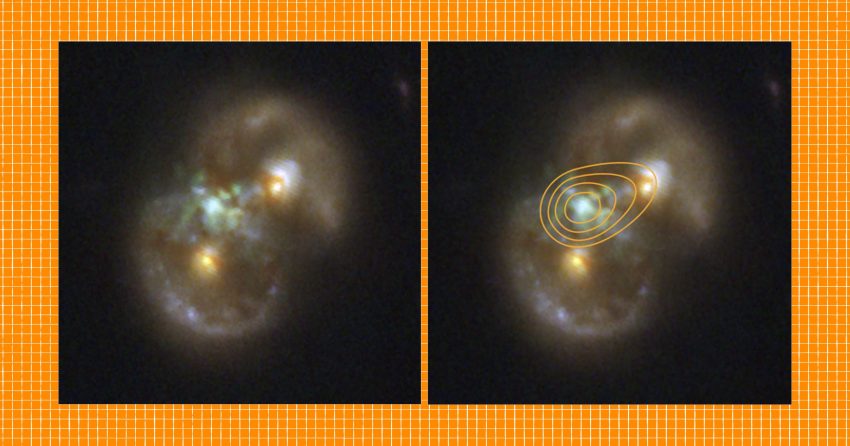A New Cosmic Discovery: The Infinity Galaxy
Astronomers have made a groundbreaking discovery using data from the James Webb Space Telescope. They’ve identified a unique cosmic object dubbed the “Infinity Galaxy.” This extraordinary structure is the result of a head-on collision between two galaxies, offering a rare glimpse into the formation of some of the most massive black holes in the universe.
The Infinity Galaxy is not only visually striking but also scientifically significant. It could hold the key to understanding how supermassive black holes, which can weigh millions or even billions of times the mass of our Sun, come into existence. These celestial giants are capable of influencing trillions of stars, making their origins a major topic of interest in cosmology.
Pieter van Dokkum, lead author of a recent study published in the Astrophysical Journal Letters, described the galaxy as “unusual” and highlighted the presence of a supermassive black hole that is pulling in a significant amount of material. He noted that both galaxy nuclei contain active supermassive black holes, resulting in a system with three confirmed active black holes. One of these may have formed during the collision itself.
The discovery was made by analyzing public data from the COSMOS-Web survey, which aims to document the evolution of galaxies. The survey has collected data on over 800,000 regions so far. In an image captured by the James Webb Space Telescope, two bright spots represent the nuclei of the colliding galaxies, each surrounded by a ring of stars. This gives the galaxy its distinctive infinity symbol shape.
What stands out most is the enormous supermassive black hole located between the two galaxies. It is estimated to be about a million times the mass of our Sun and is still actively growing. Van Dokkum suggested that this black hole likely formed in its current location and relatively recently. This could be the first time astronomers have observed the birth of a supermassive black hole.
This finding could provide compelling evidence for a theory known as direct collapse, where a massive gas cloud collapses directly into a singularity, forming a black hole. Understanding how supermassive black holes form is one of the biggest mysteries in cosmology. While they exist at the center of large galaxies, including our own Milky Way, their formation process remains debated.
The traditional way black holes form is through the collapse of a massive star that explodes in a supernova. This process can create a black hole with several to hundreds of times the mass of the Sun. However, given the short time since the Big Bang, it’s unlikely that such black holes could grow to supermassive sizes through gradual accretion.
This leads to the “heavy seed theory,” where a much larger black hole forms directly from a massive gas cloud. The early universe’s hot conditions might have allowed such a collapse to occur without forming smaller stars. Van Dokkum explained that while the direct-collapse process is not yet fully understood, the Infinity Galaxy provides strong clues that this might be happening.
The central black hole’s velocity aligns with the surrounding gas, suggesting it formed in place rather than being transported from elsewhere. When the two galaxies collided, their gas compressed into a dense knot, which then collapsed into a black hole. Van Dokkum emphasized that while they cannot confirm definitively that this is a direct-collapse black hole, the data supports the idea of a newborn black hole and rules out some alternative explanations.
This discovery opens new avenues for research into the origins of supermassive black holes and the processes that shape the universe. As astronomers continue to explore these cosmic phenomena, the Infinity Galaxy stands as a remarkable example of the dynamic and mysterious nature of the cosmos.
